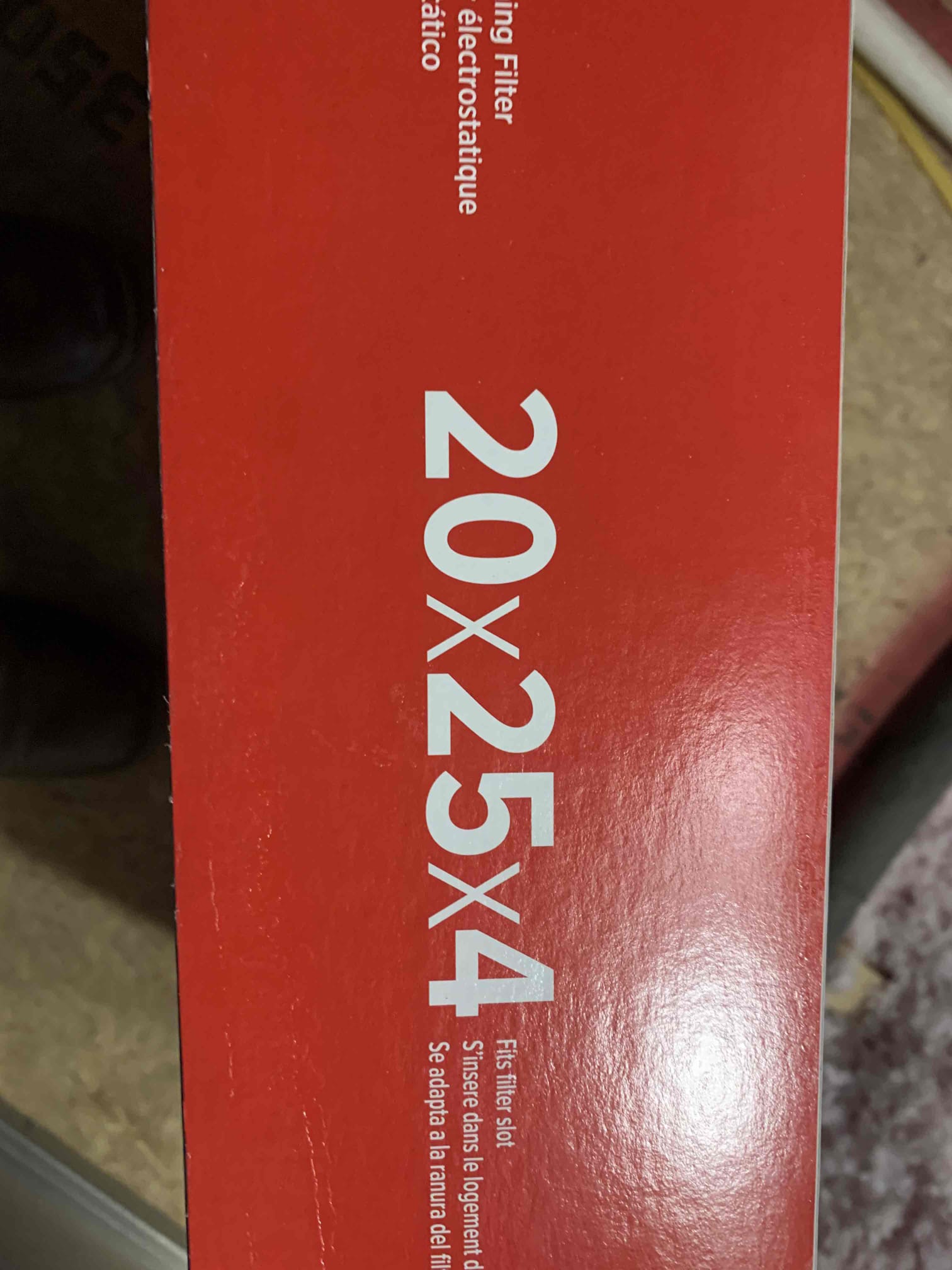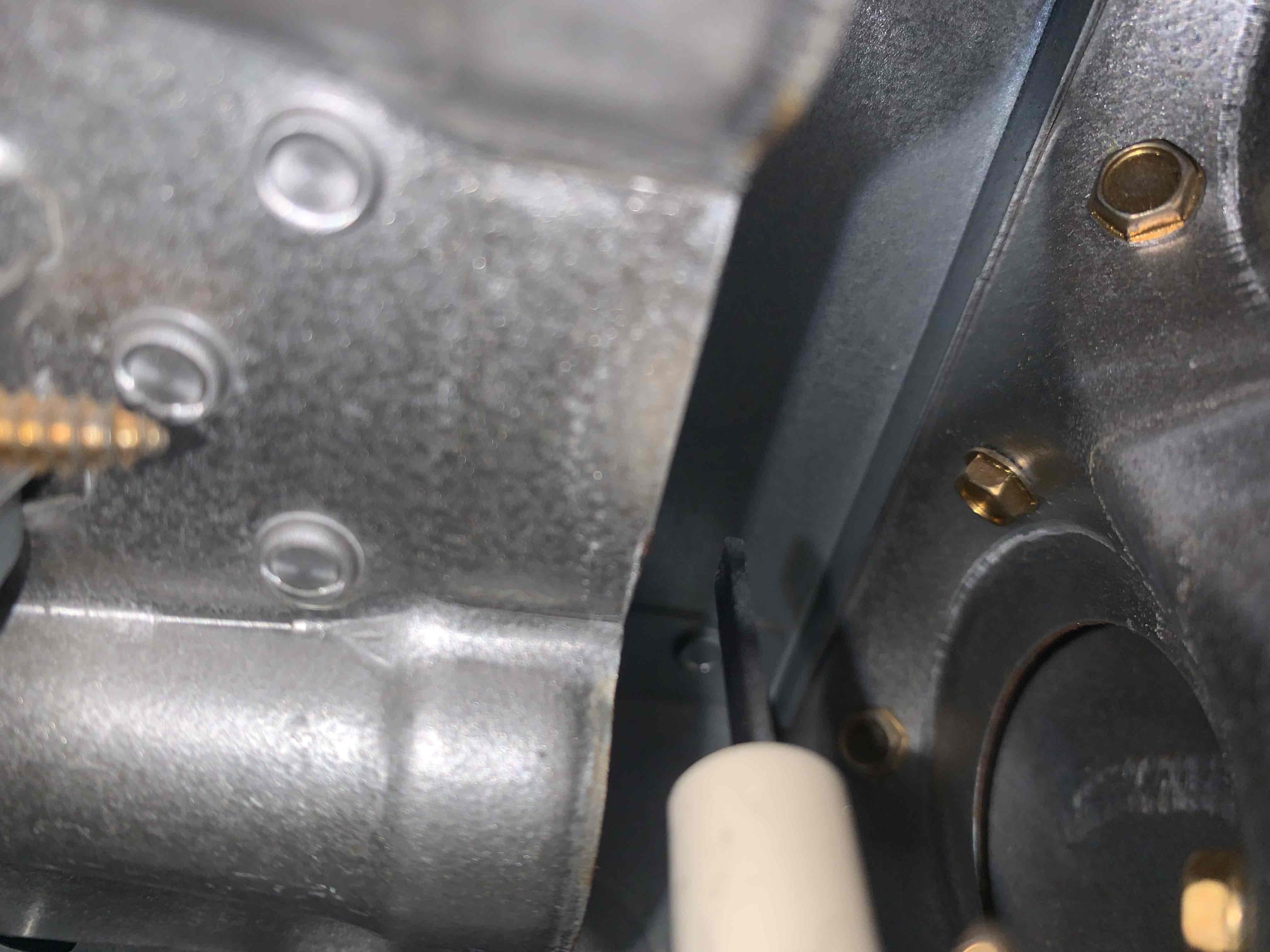 Overall Experience
Overall Experience
 Quality
Quality
 Price
Price
 Convenience
Convenience
Couldn't have asked for anything better. Charles was on time, honest, respectful, clean, worked quickly and accurately. Awesome service.
 Overall Experience
Overall Experience
 Quality
Quality
 Price
Price
 Convenience
Convenience
12/24/2025 I returned to install the warranty blower motor. I tested the system in heating and cooling to ensure proper function in both cycles. Originally the unit wasn’t using the industry standard high speed for cooling. This is likely what was causing the system to freeze. I wired the cooling to use the high speed. I observed that the unit was only producing a 16 temperature drop in cooling. Likely the system was never topped off when it was installed. There is a room that is uncomfortable due to duct design. Customer is going to leave the bedroom door open more often to see if adding a return will help address the comfortability issue without redesigning the ductwork. System is heating and cooling upon departure.
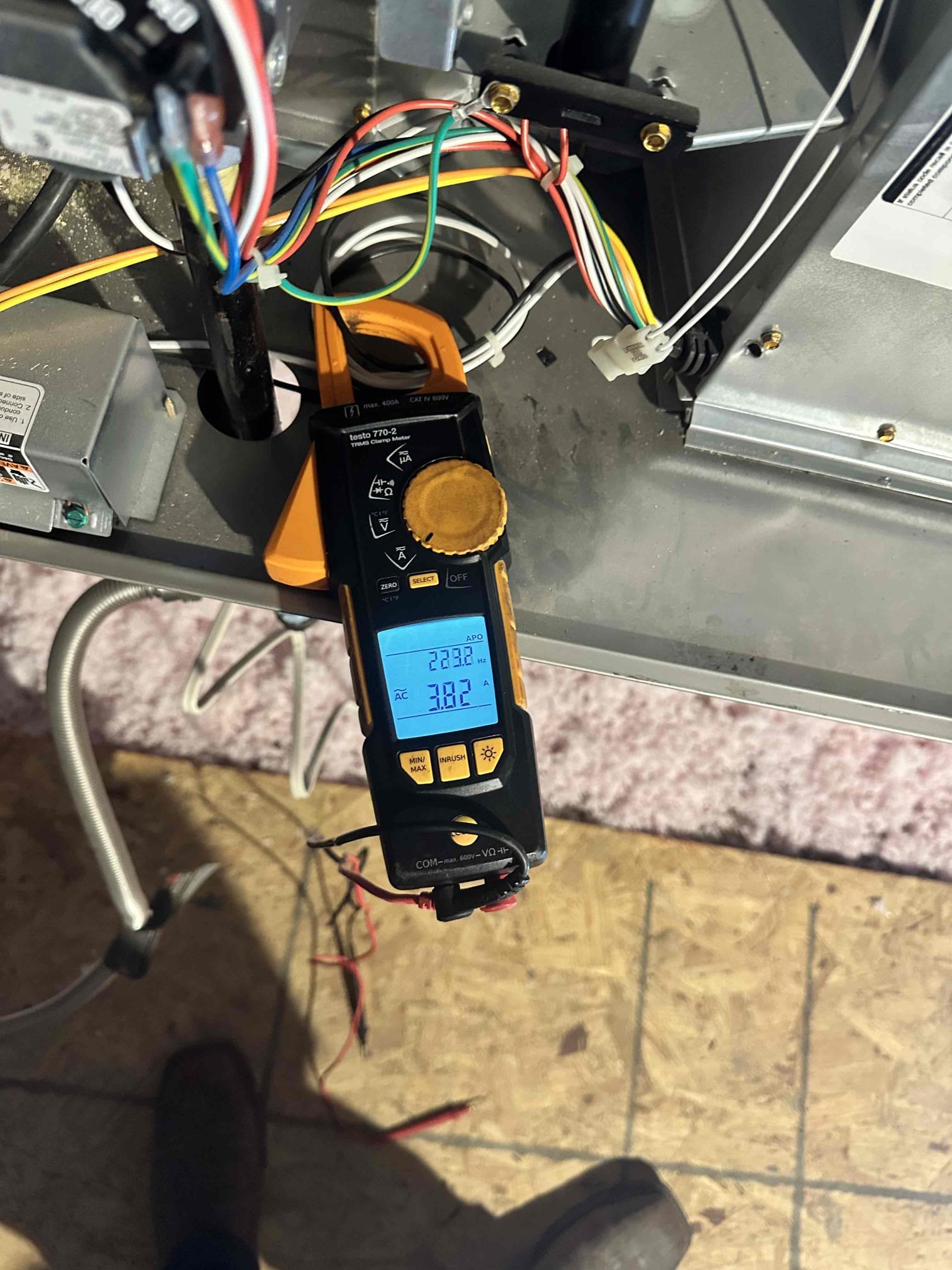
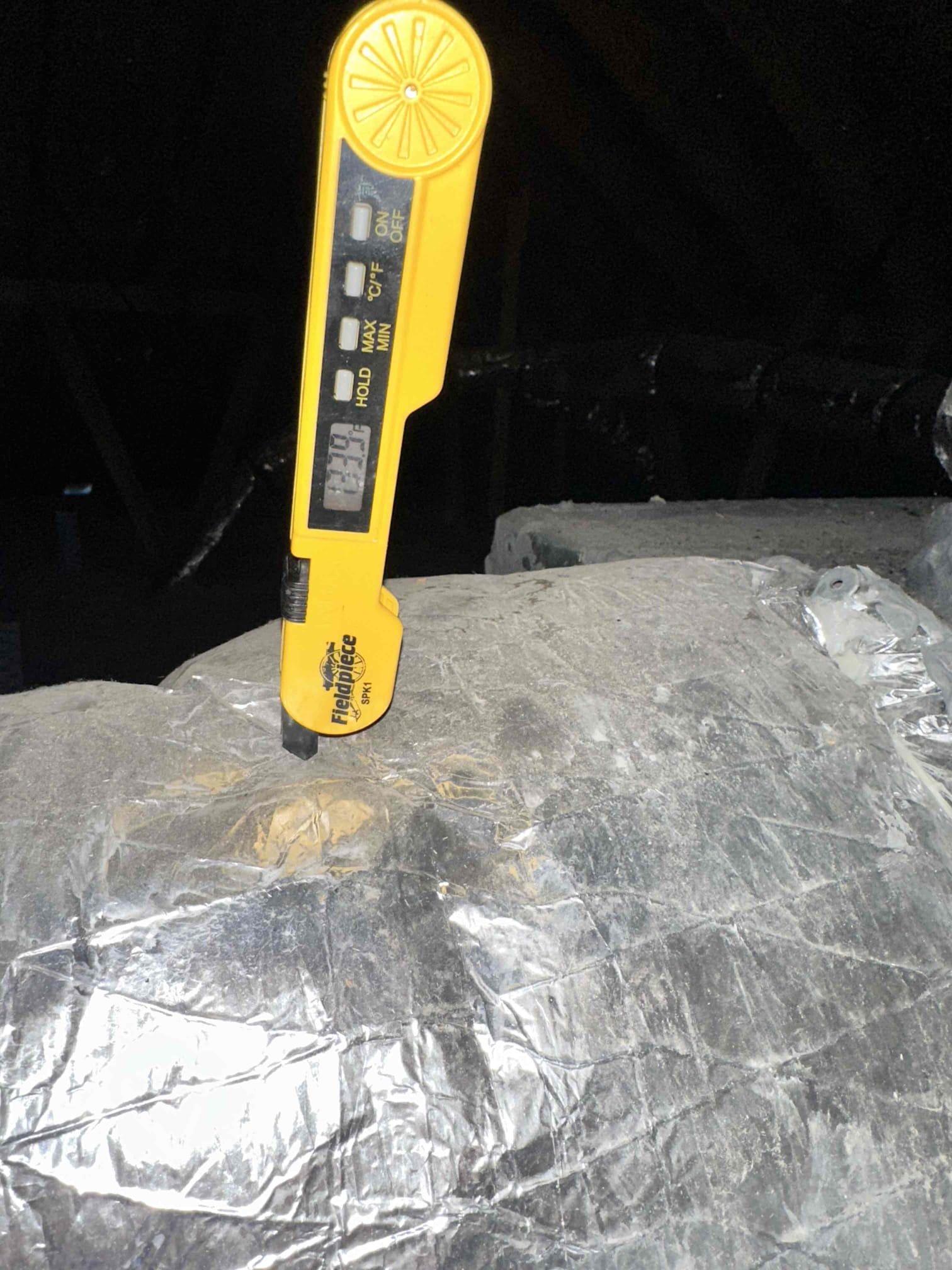
1. Visually inspected condenser coil for debris/ dirty. 2. Inspected condenser fan motor. 3. Inspected condenser fan blades. 4. Inspected/ cleaned wiring connections. 5. Tested for gas leaks 6. Tested functionality and cleaned flame sensor 7. Tested functionality and cleaned pressure switches and ports 8. Inspected / replaced return filter. 9. Inspected return plenum for debris/ dirty. 10. Inspected evaporator coil. 11. Tested functionality and visually inspected surface igniter 12. Checked blower amp draw. 13. Measured temperature differential from supply to return. 20 degrees measured. Noticed large amount of rust in drain pan for downstairs unit. Pan is not completely rusted through but not terribly far off. Also noticed a decent amount of dust on the blower wheel. This creates drag on the motor, causing it to work harder and ultimately shortening the lifespan of the motor. Recommend cleaning to ensure maximum lifespan of the motor. Units in good working order upon departure.
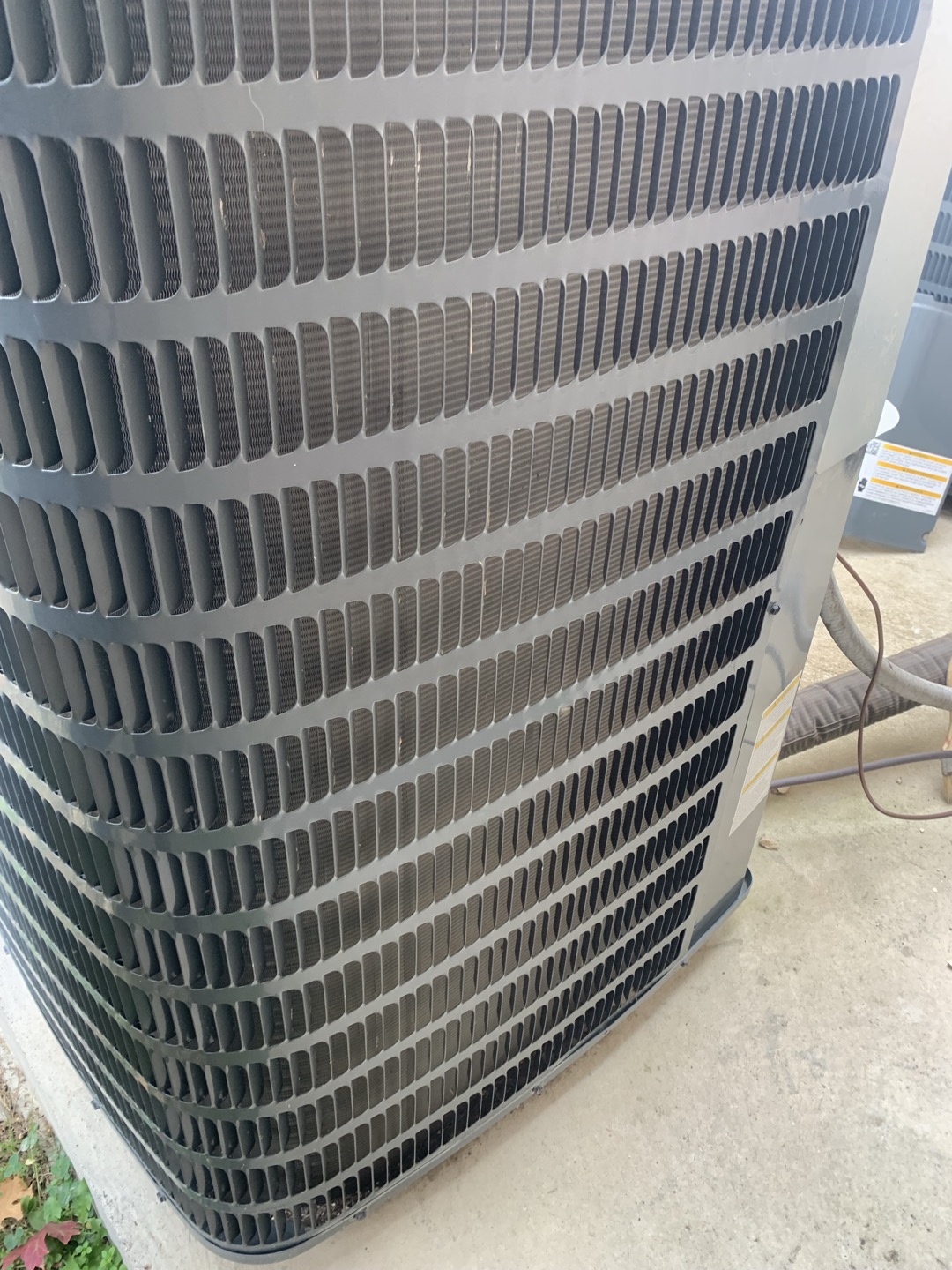
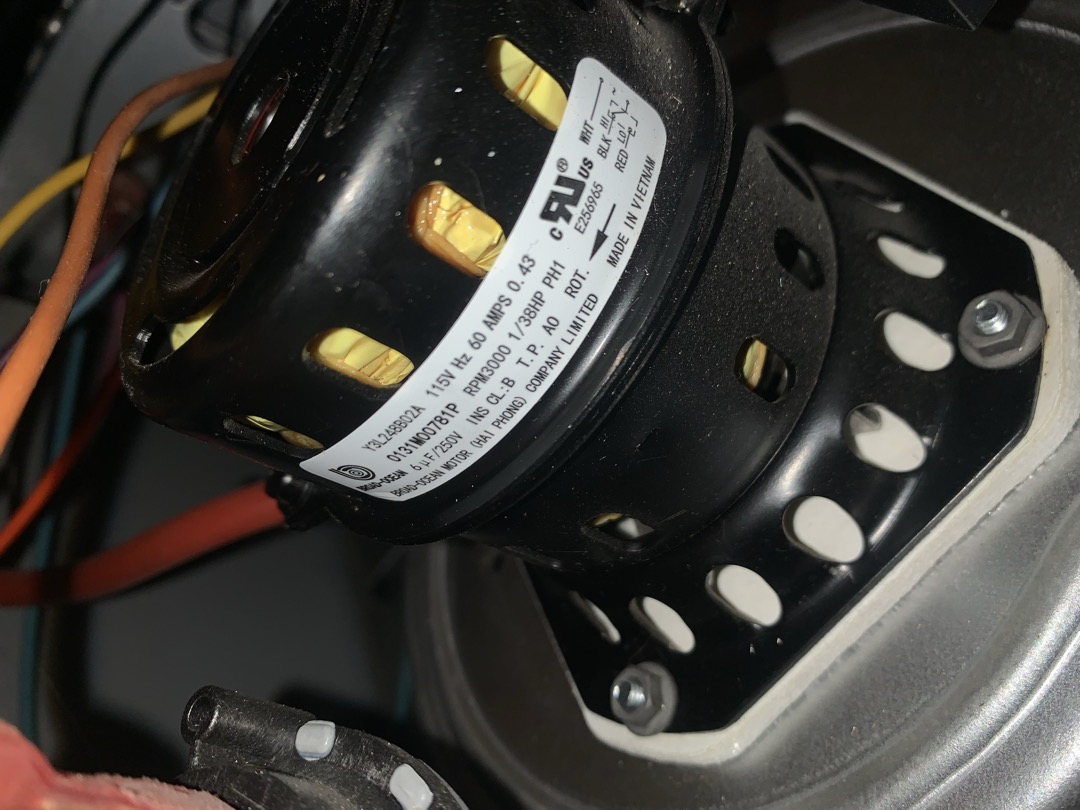
12/22/2025 I returned to install the control board. Once the board was installed, I regained all of my low voltage throughout the system. I proceeded to test the system and discovered another issue. This issue could not be determined without 24v passing through the control board. The blower motor has failed, also. I verified I was getting 24v to the speed taps and 120v to the motor. We will order the motor and return to install. No deposit collected and we will credit the original deposit with return visit. WARRANTY CIRCUIT BOARD/ SHIPPING & PAPERWORK & CARRIER WARRANTY PROCESSING FEE
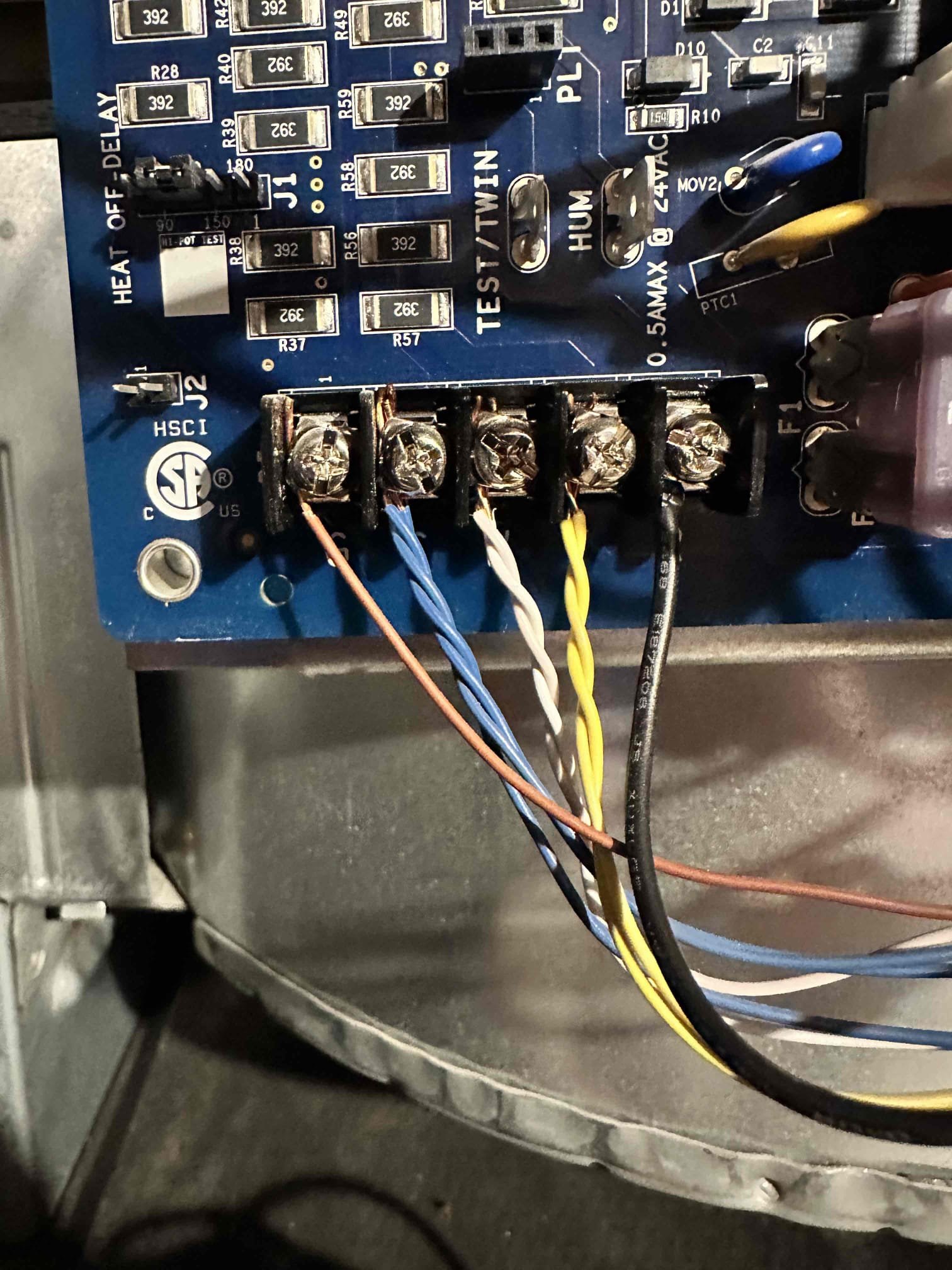
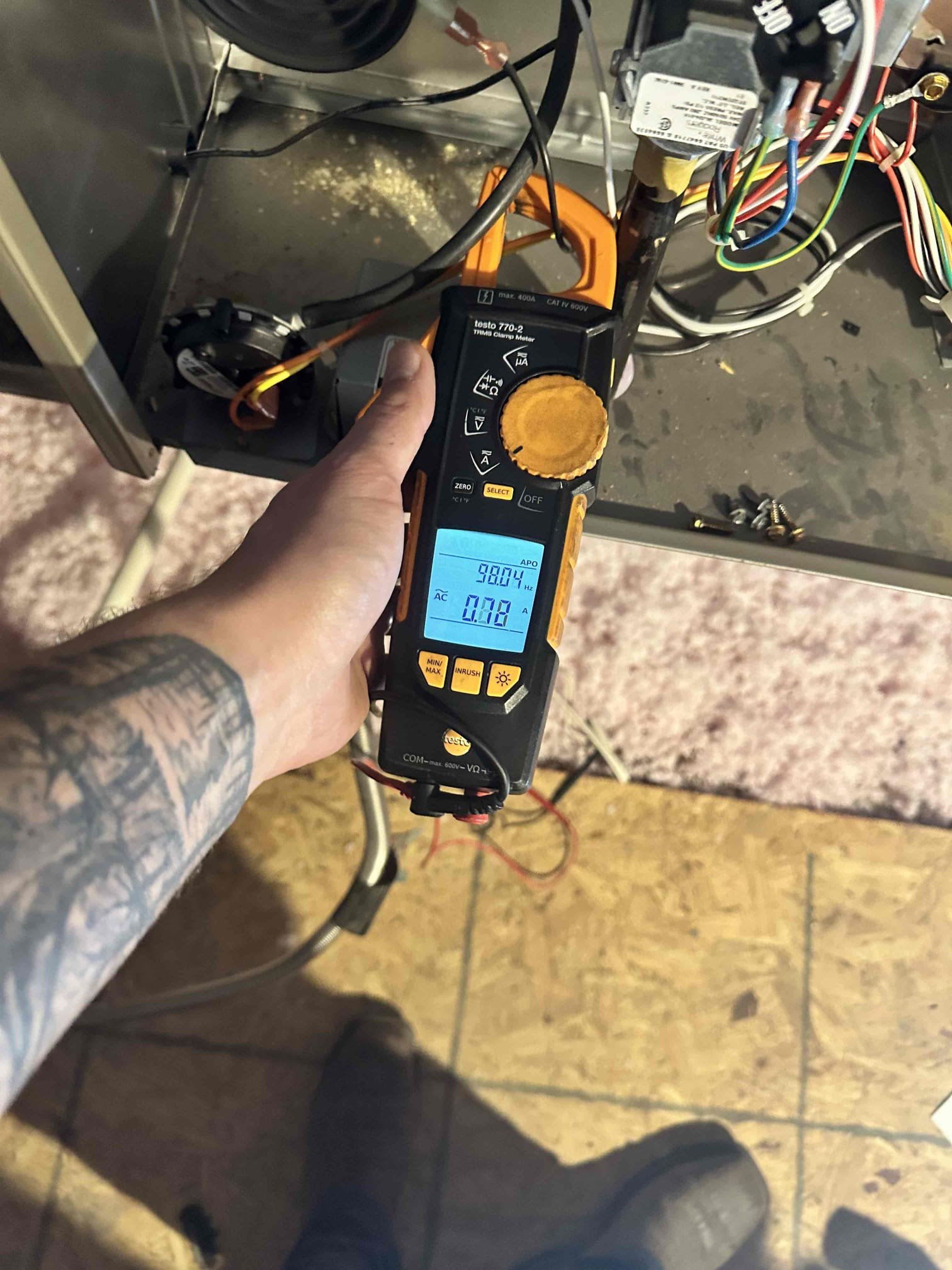
Upon arrival, I had the homeowner turn on the heat and I proceeded to the attic. I observed that the heating came on and it tripped on high limit. I noticed that the blower did not come on, and the homeowner said the thermostat lost power. I verified my power coming in was 120v and the transformer was producing 24v. The control board is only passing 15-18v to the low volt portions of the control board. The control board is under warranty and on order at Carrier - Allen. We will return Monday to repair the system.

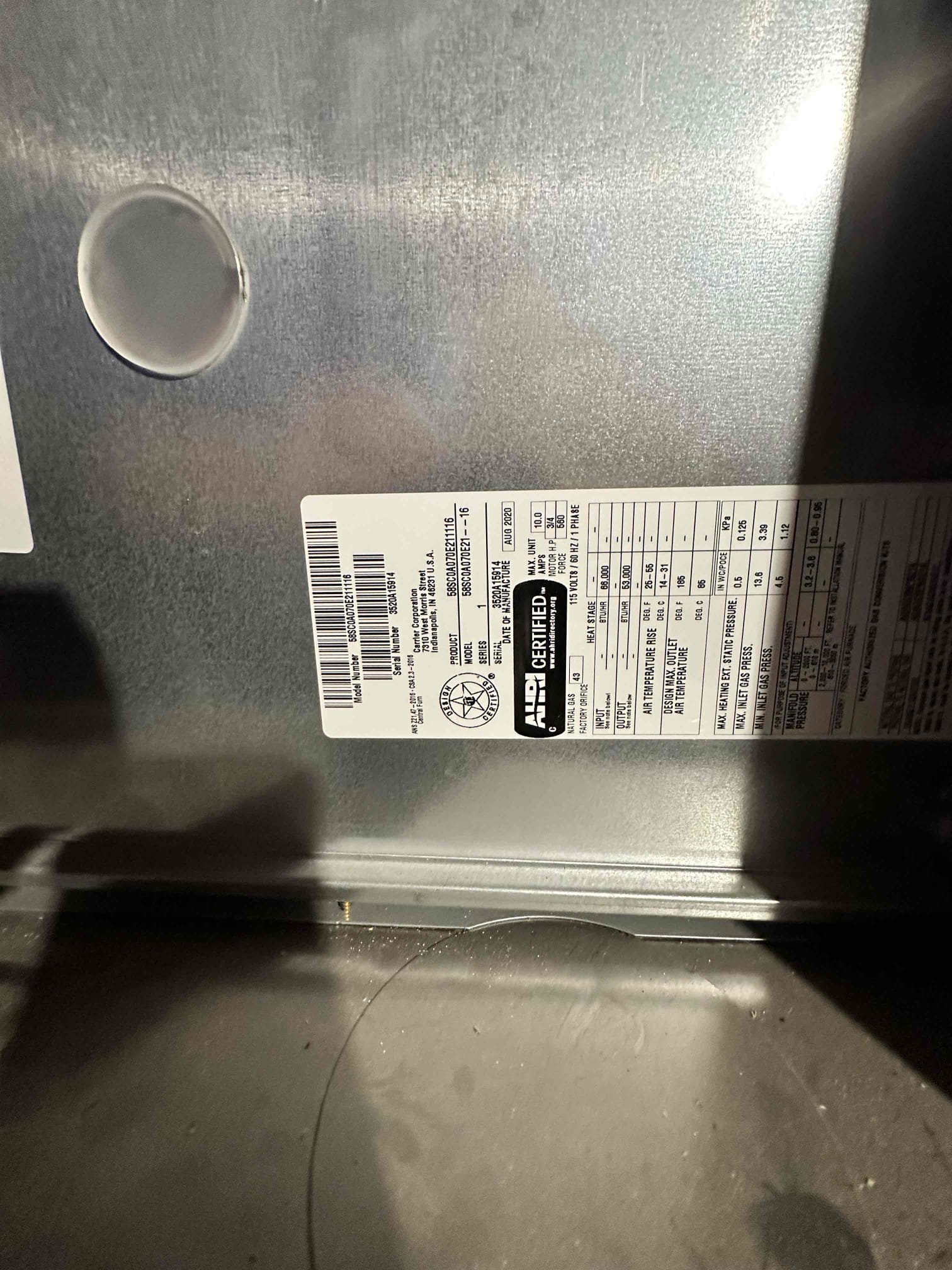
Returned to install a inducer motor. Once installed, I cycled the system a couple times to ensure proper operation. System is back to heating properly. I was instructed to send a payment link by Lynn.

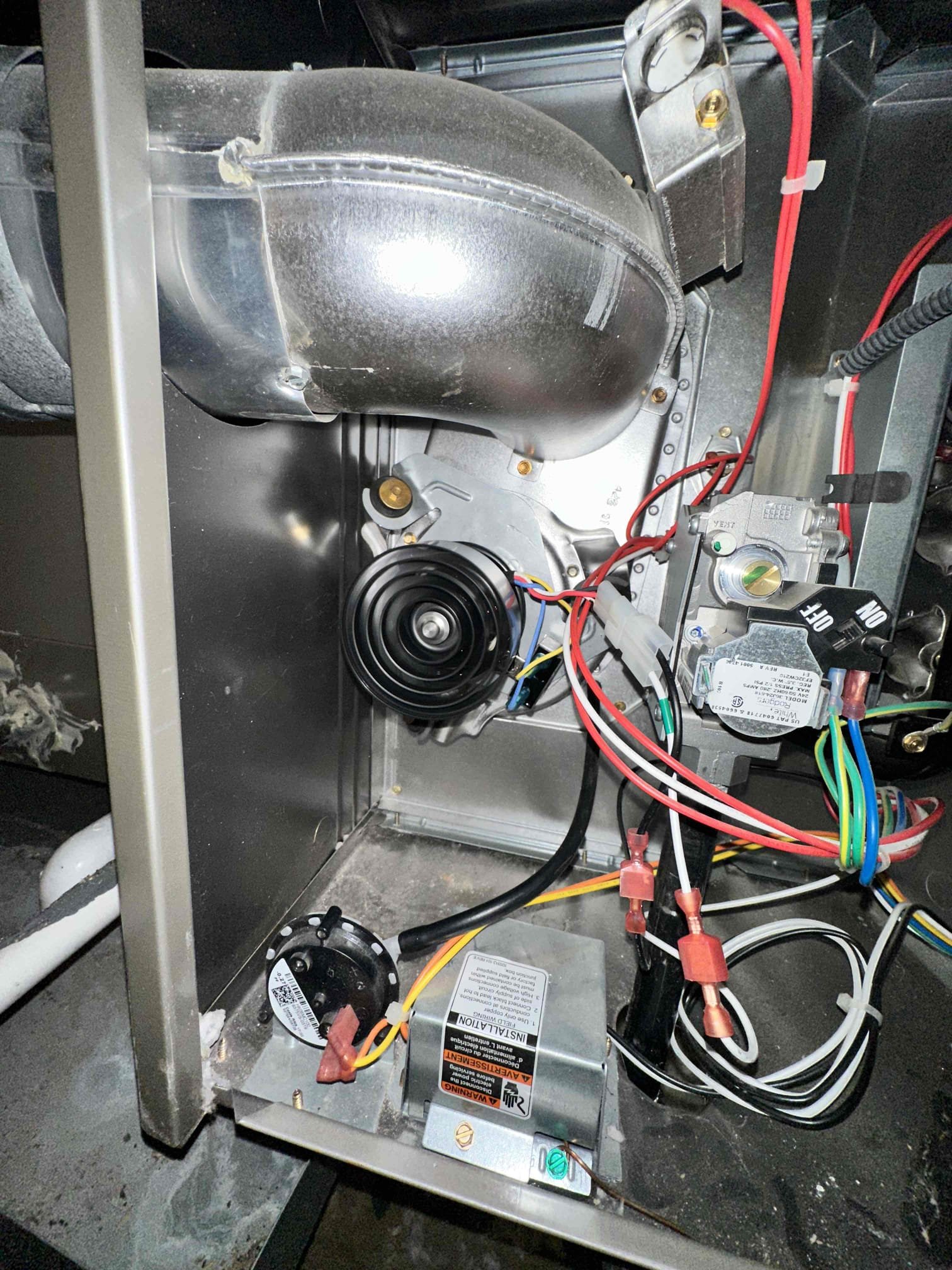
I returned to perform the work listed below. I tested both system to ensure proper operation before departure. Customer financed the work and I verified that he finished the email confirmation. Replacement of the upstairs blower motor Replacement of both blower capacitors Cleaning both blower wheels Fix leaking gas lines at the flare connections
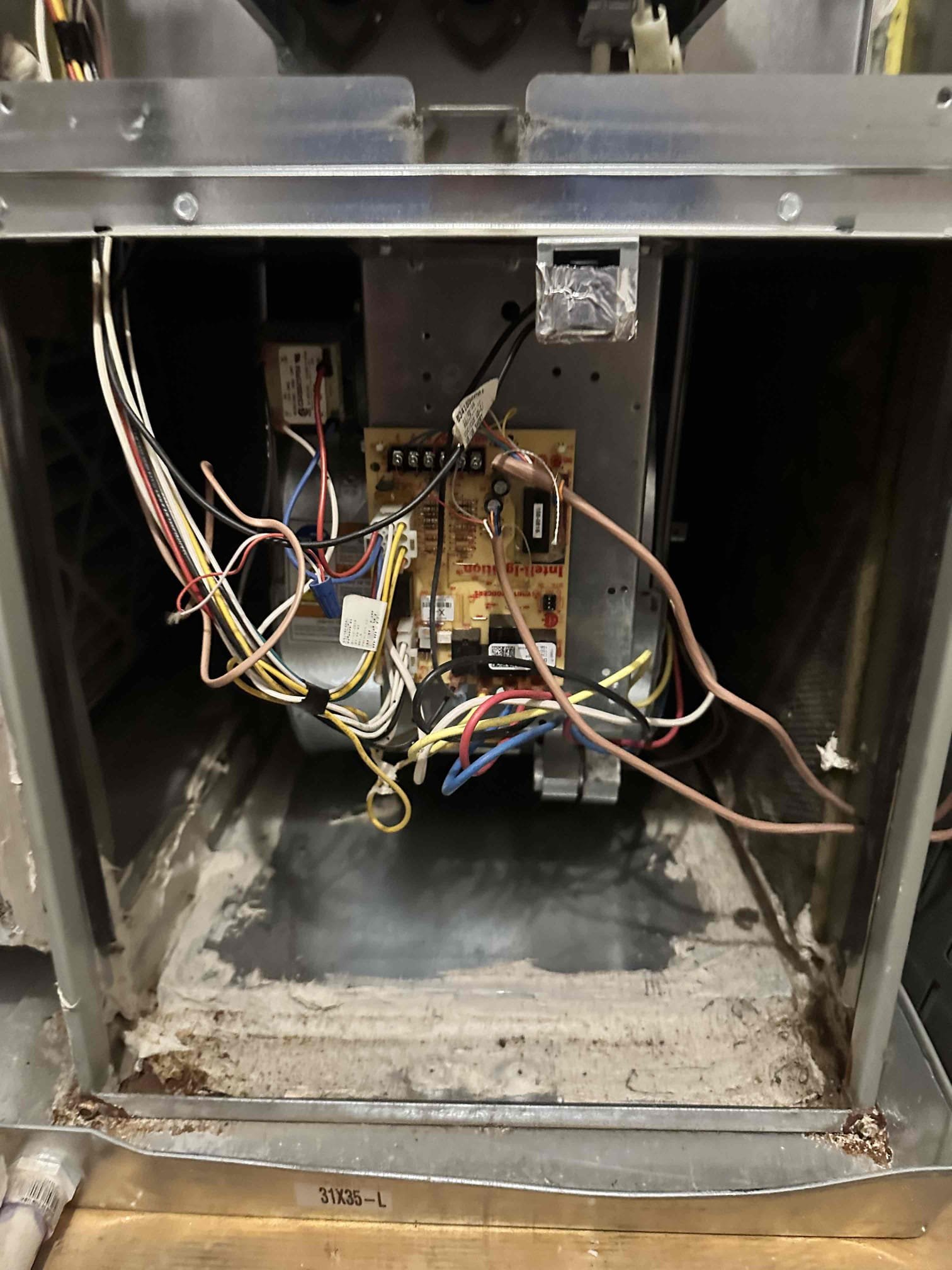
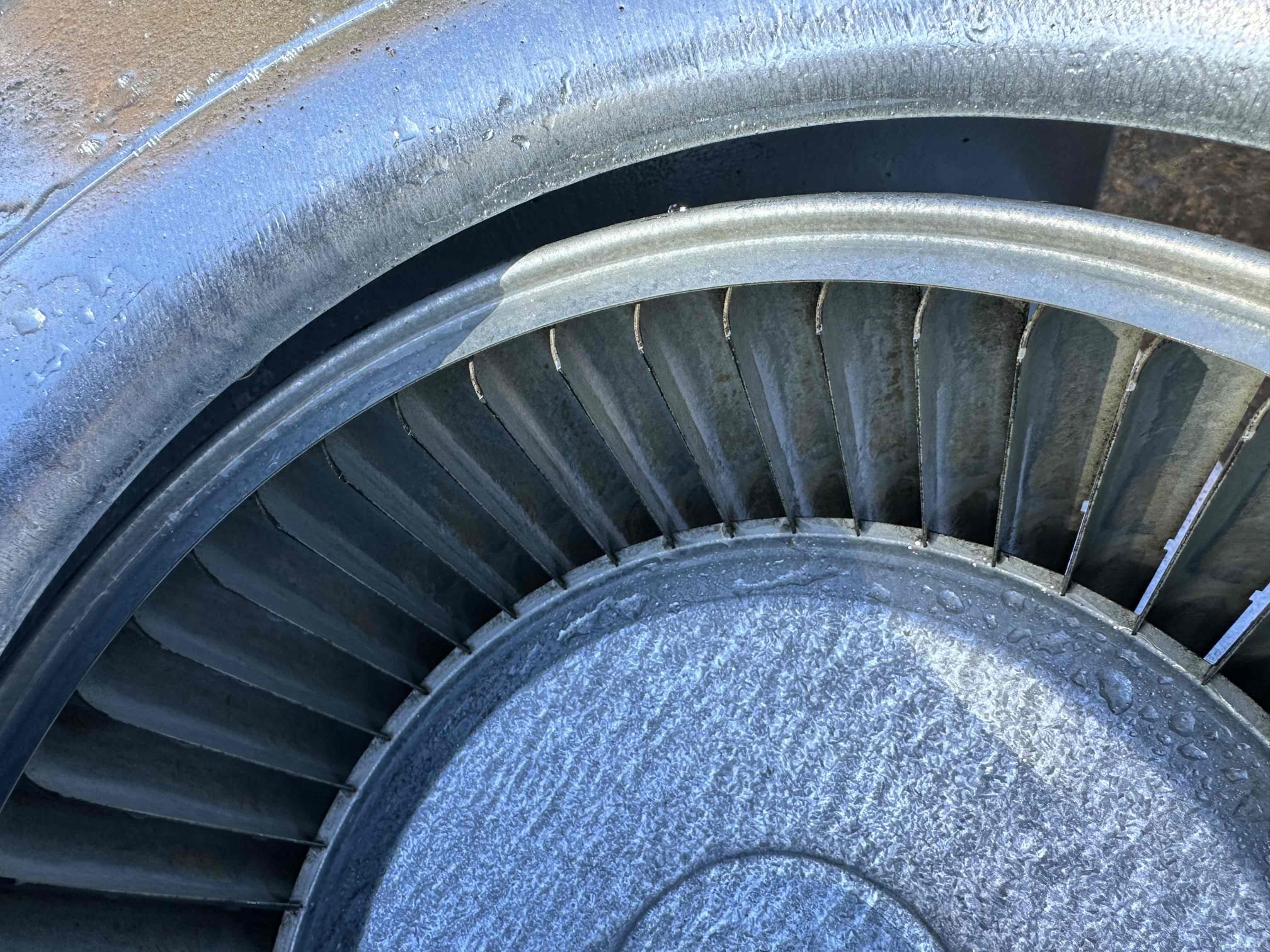
Preformed single system heating maintenance on a 2021 carrier gas furnace. The system has 2 zones. I tested all electrical components and safeties. All tested within manufacturer specifications. I changed the filter for the client 20x25x1. I did let then client know they have the room for a 20x25x4 filter so they wouldn’t have to change it as often. Temp being supplied to the home durning a call for heat was at 119.8 degrees and 68 degrees return air. I proceeded outside to visually inspect the outside unit. I did notice the unit did not have any type of surge protection. Unit was heating upon departure.

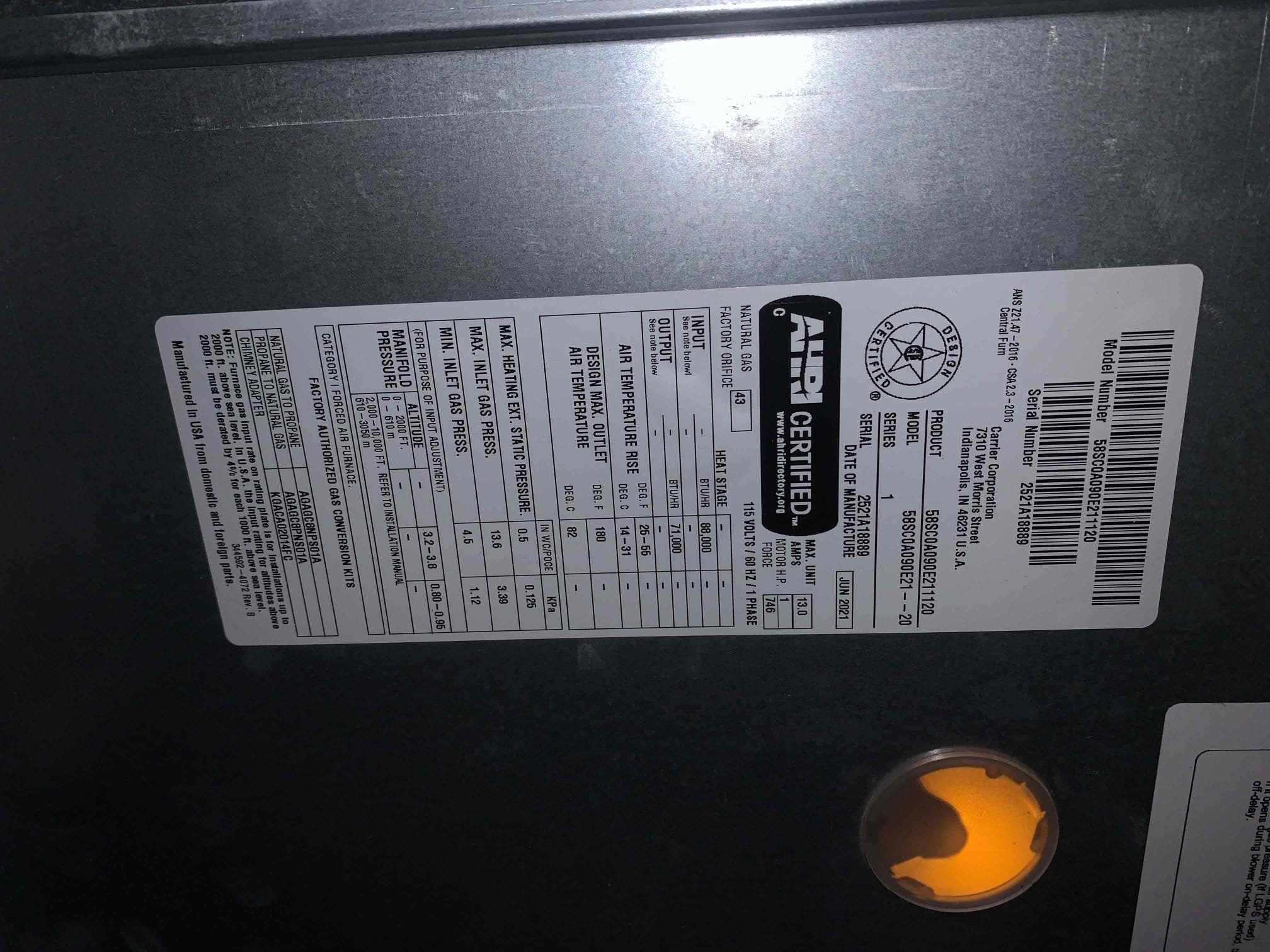
I returned and replaced the defrost temperature sensor for the smaller unit. I began to unhook wires to replace the heat kit for the main unit and discovered that I did not have the correct heat kit. The heat kit I was given by the supply house has a 9 pin plug. The one that is currently in there is for a TEM6 and has a couple wire nuts that go to the control board. From the control board it is fed to relays to activate the heat strips on a 20kw heat kit. The heat kit information isn’t obtainable due to tag damage. We will need to cross reference the model and serial from the airhandler tag from the job on 12/12/2025.
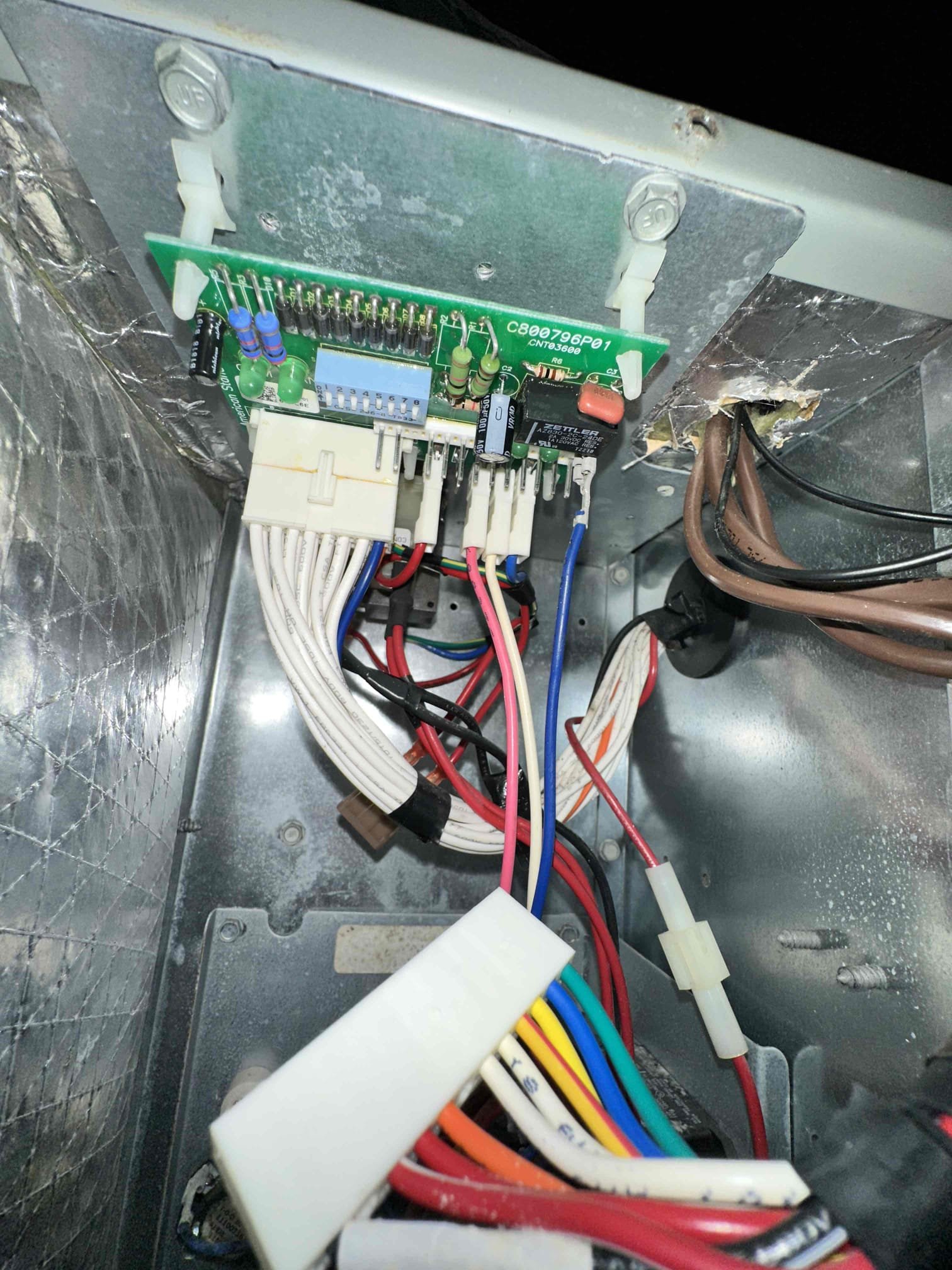

Upon arrival, I found that the inducer motor is locked up on the downstairs unit. This will not allow the heating process to happen. I sent a payment link via email.
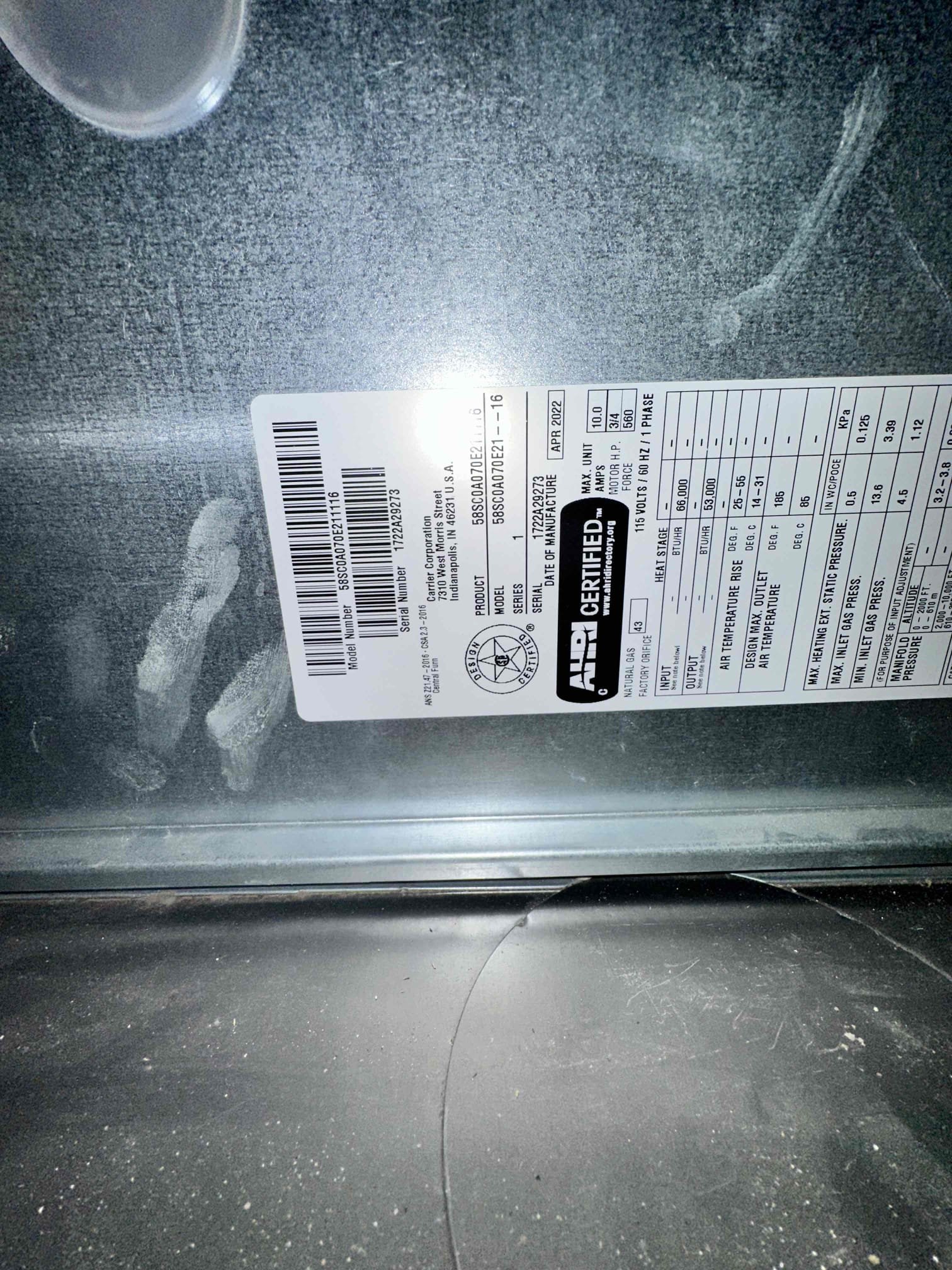
I performed a heating maintenance on two 2016 gas systems. I checked amps, capacitors, cleanliness, electrical, filters, and safeties. During my observation, I noticed that both blower wheels are in need of cleaning, both capacitors failed testing, and both units have gas leaks on the flex lines. The blower motor for the upstairs has bearings that are completely out. I verified warranty on these products. The blower motor and capacitors are covered under warranty. The cleanings and gas line are not covered. I spoke with he homeowner about surge protection and upgrading the filtration to help with the dust build up on the blower wheels. Warranty expires: 11/26/2026.

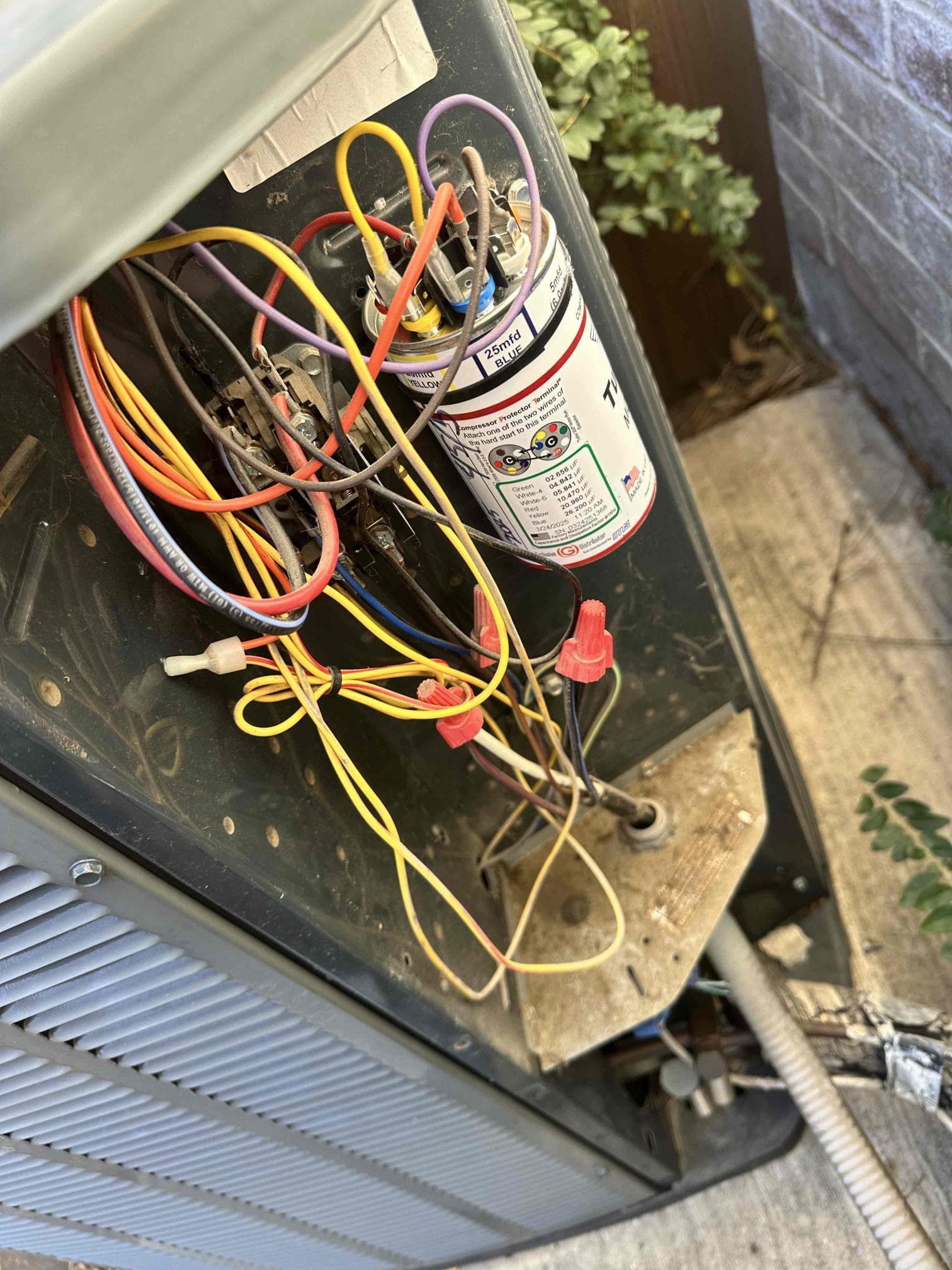
I performed a 2 system heating maintenance on 2019 heat pump equipment. I checked amps, capacitors, filters, electrical, cleanliness, and safeties. Customer spoke about the smaller heat pump icing over. I investigated and found that the defrost sensor is reading 8kohms and that equates to 85 degrees. This is causing defrost to not occur. I noticed that only 2 of the 4 heat strips are operating in the bigger unit. I verified power to the heating strips and confirmed that 2 of them are broken. The smaller heat pump’s fan motor is amping right at maximum rated amps. This is a sign that the motor is likely to fail soon. I got approval for the defrost sensor and heating kit. I ordered them and they are available for pick up in Allen at shearer supply.
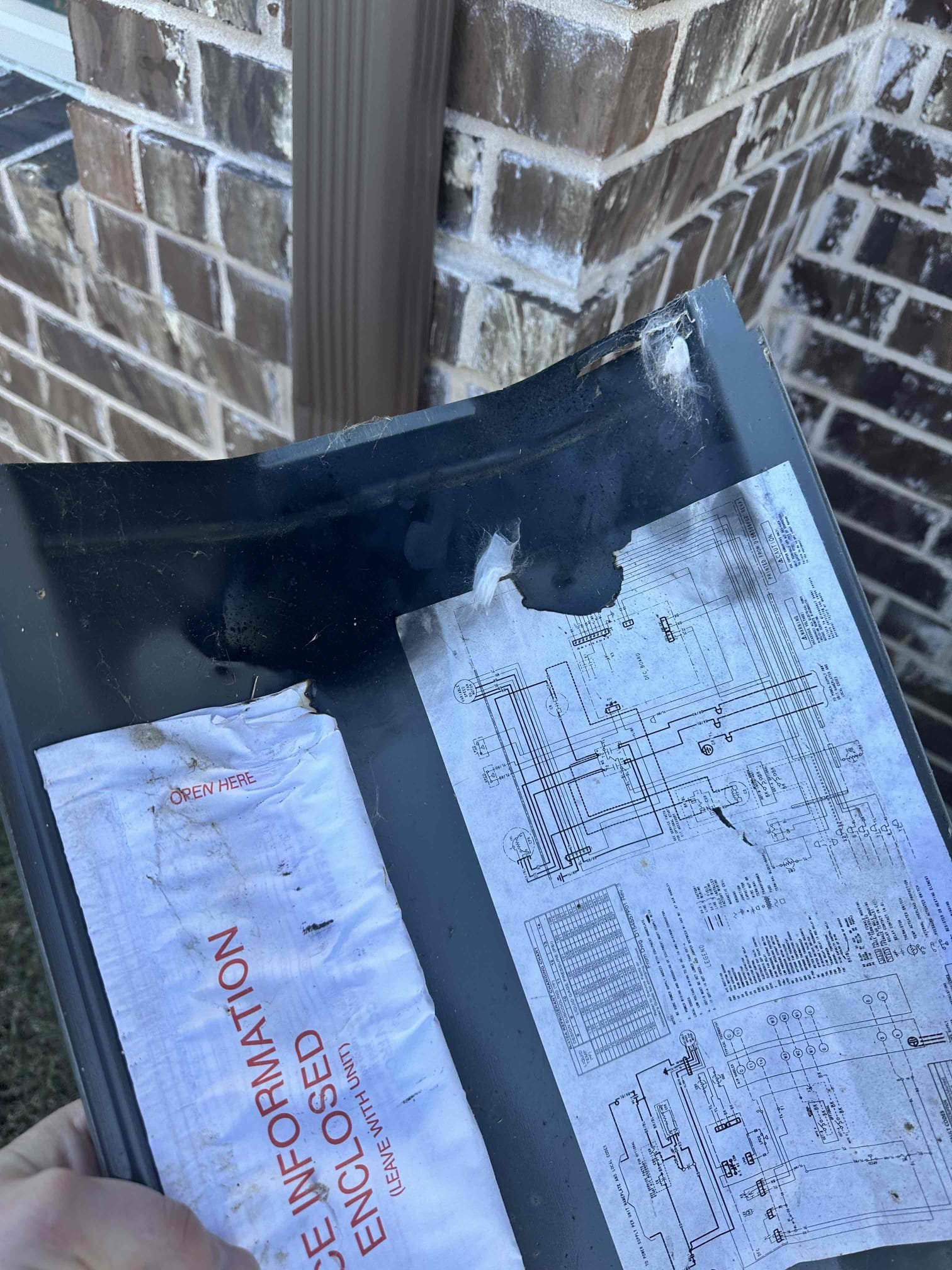

Dryer Vent Cleaning was preformed with before and after pictures. We preformed heat maintenance on (3 ) 2019 Lennox gas systems. We tested all electrical components and safeties on the inside units. All tested within manufacturer specifications. We did find that on the north side unit had some dust/debris inside the duct work. We then proceeded outside to visually check all of the outdoor units. While inspecting those units we noticed that all three could benefit from having surge protection installed just in case of a lightning strike or possible power surge. Units were heating upon departure. 2 of the units filters need to be changed 20x25x4.
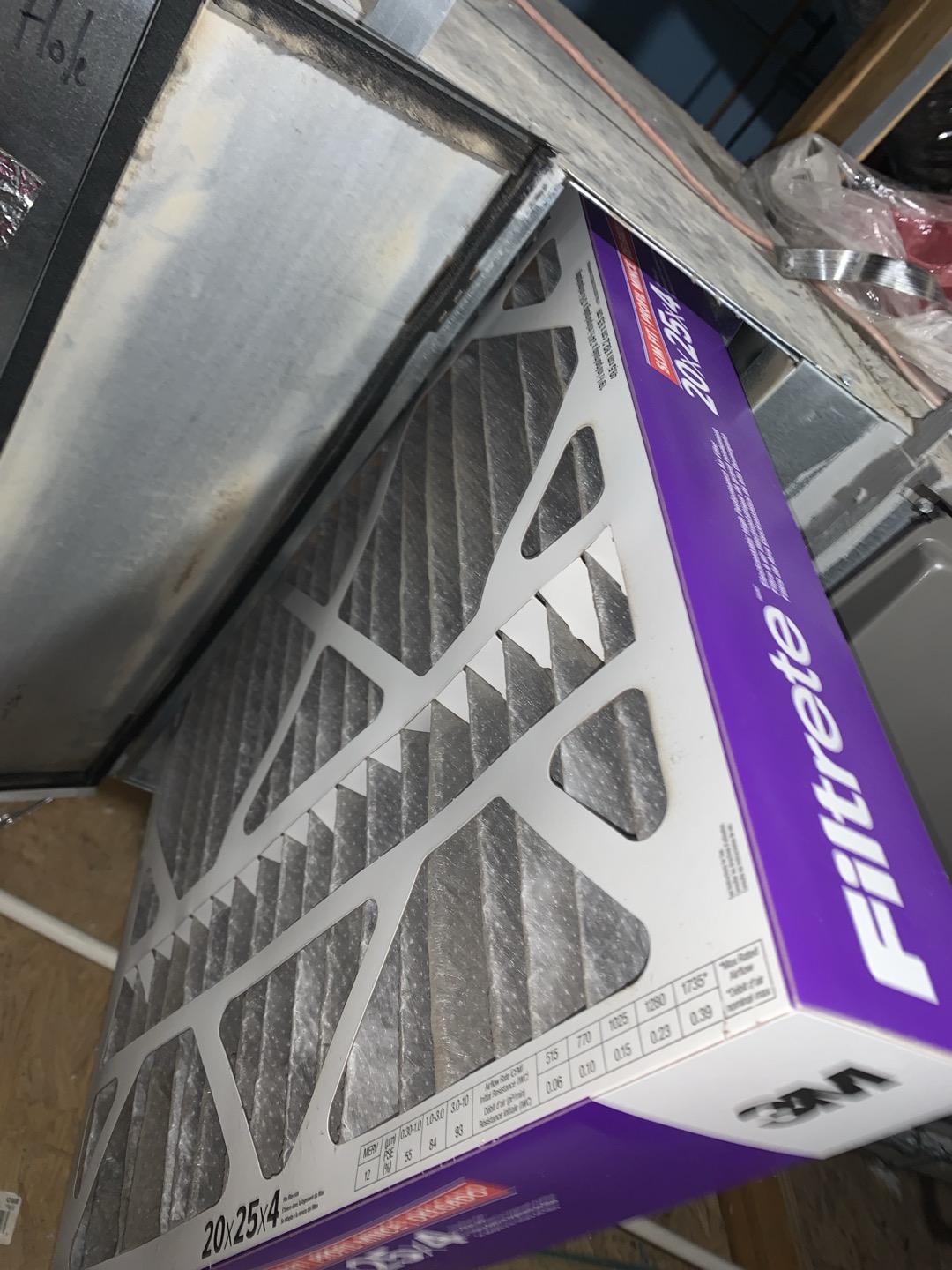
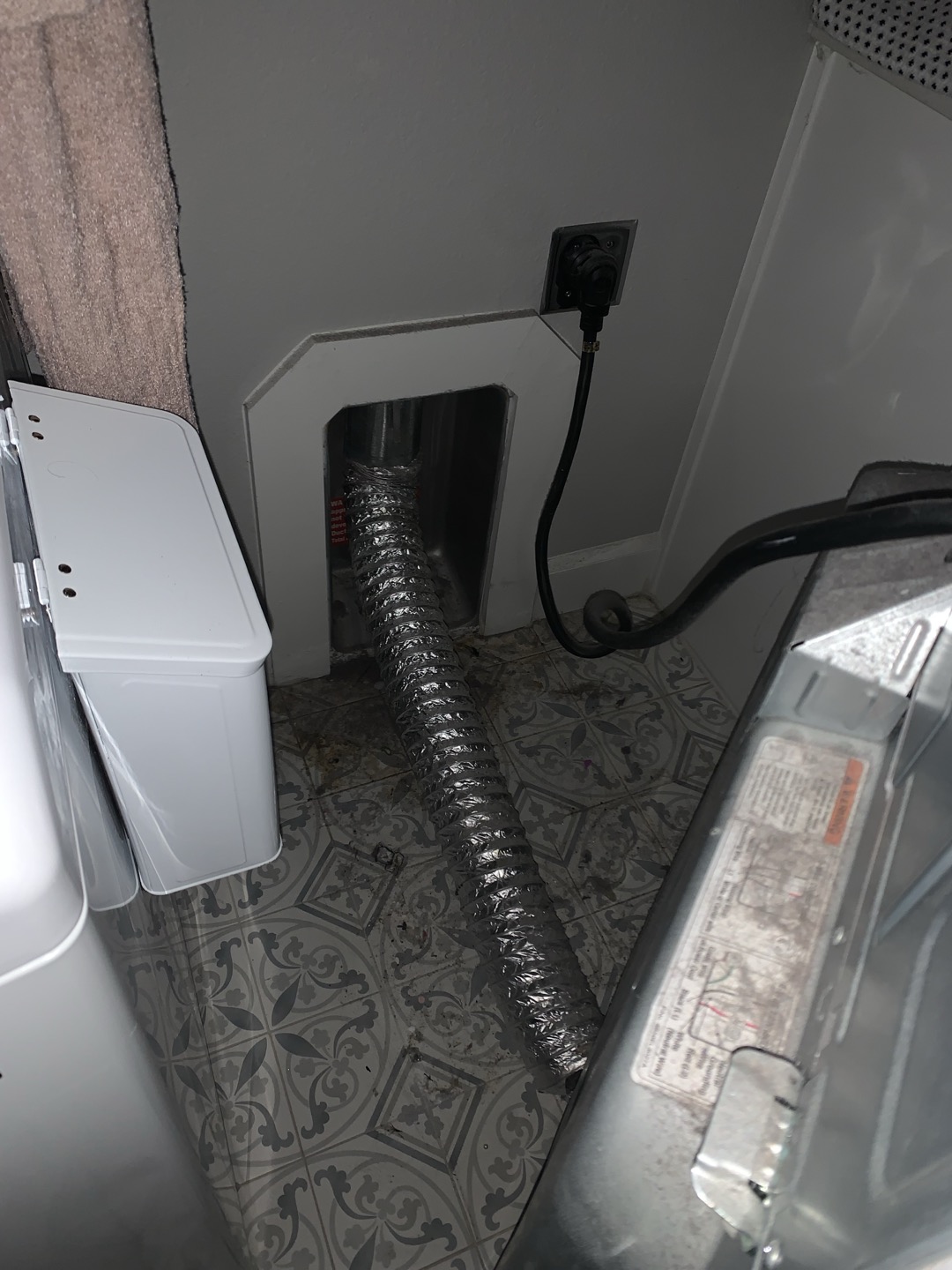
Preformed dryer vent cleaning presented before and after photos of work completed. Preformed single system heat maintenance on a 2022 gas. I tested all electrical and safeties. All tested within manufacturer specifications. I noticed the blower wheel to have some dust build up on it which can cause the motor to fail prematurely. The client did not need the filter changed at this time. I proceeded to the outside unit to visually inspect and I notice the unit does not have surge protection on it. I provided estimates for installing a surge protector and blower wheel cleaning. Unit was cooling upon departure.
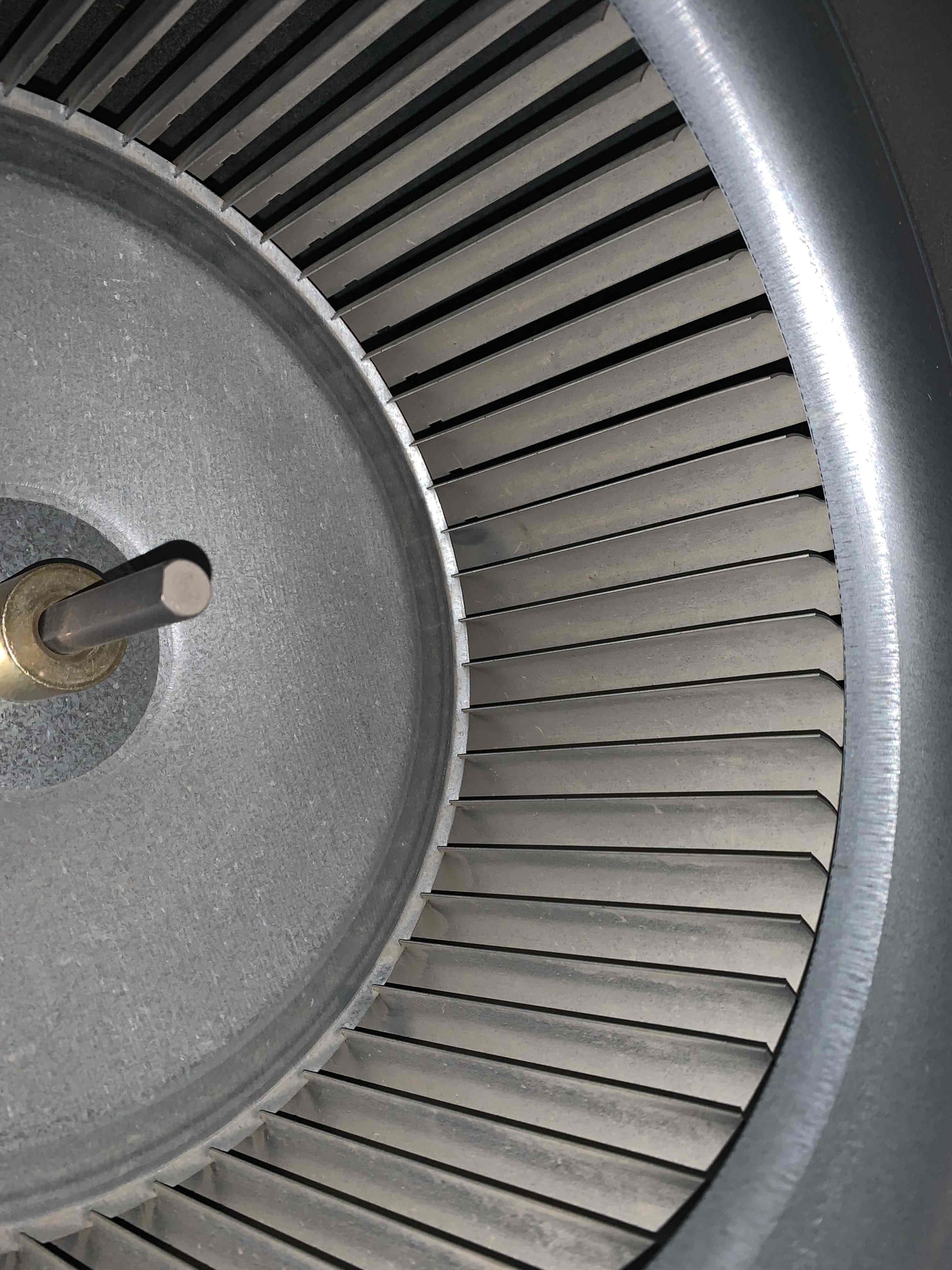
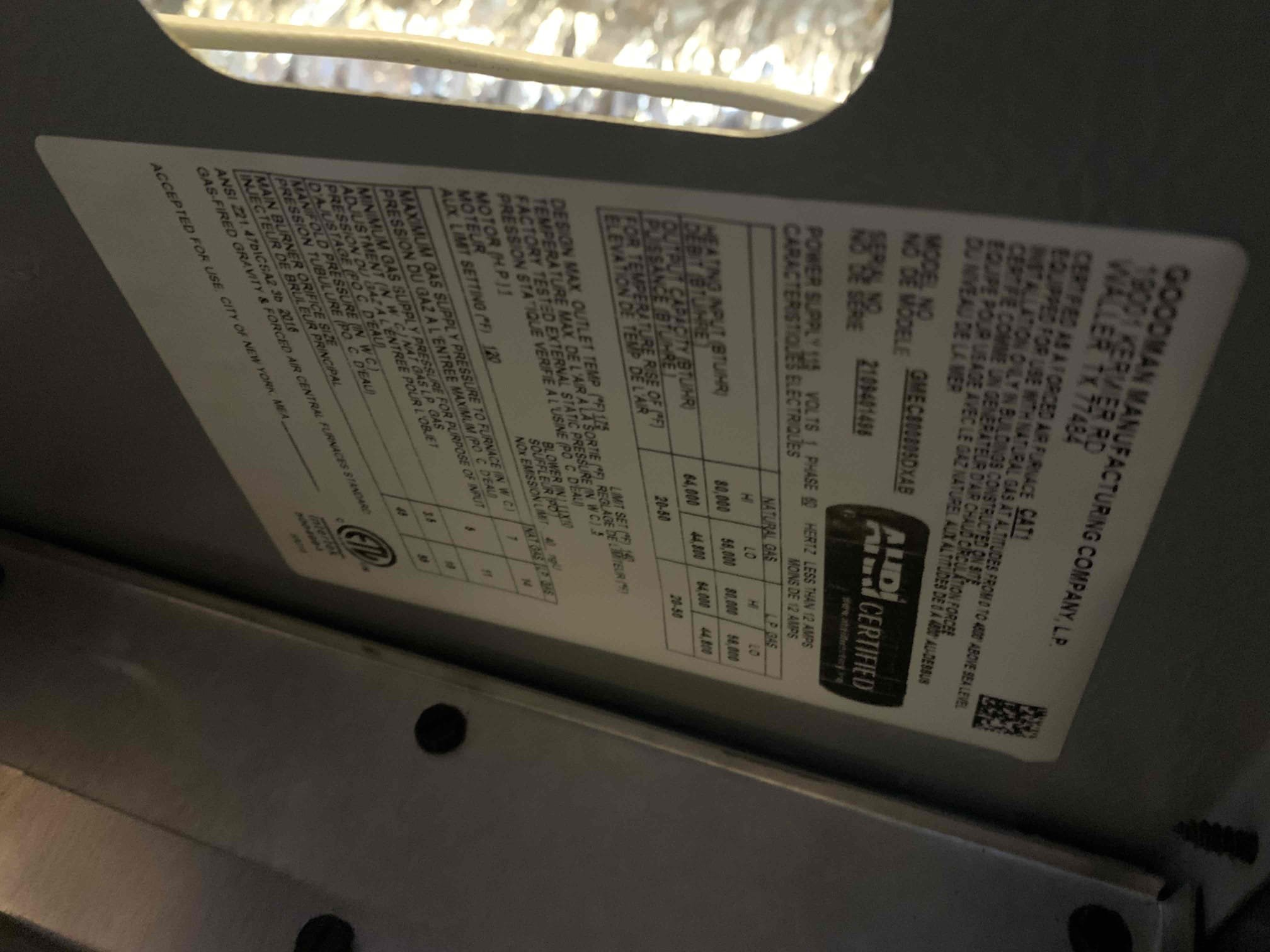
Arrived on site for heating maintenance on 2022 carrier furnace. Homeowner stated all was well with regards to normal system operation and they had turned on the heat this year. Proceeded with normal heating maintenance as scheduled. 1. Visually inspected condenser coil for debris/ dirty. 2. Inspected condenser fan motor. 3. Inspected condenser fan blades. 4. Inspected/ cleaned wiring connections. 5. Tested for gas leaks 6. Tested functionality and cleaned flame sensor 7. Tested functionality and cleaned pressure switches and ports 8. Inspected / replaced return filter. 9. Inspected return plenum for debris/ dirty. 10. Inspected evaporator coil. 11. Tested functionality and visually inspected surface igniter 12. Checked blower amp draw. 13. Measured temperature differential from supply to return. 20 degrees measured. I did notice the inducer motor making an abnormal amount of noise on start up, however, running amps were well within range. This could be indicative of the bearings wea
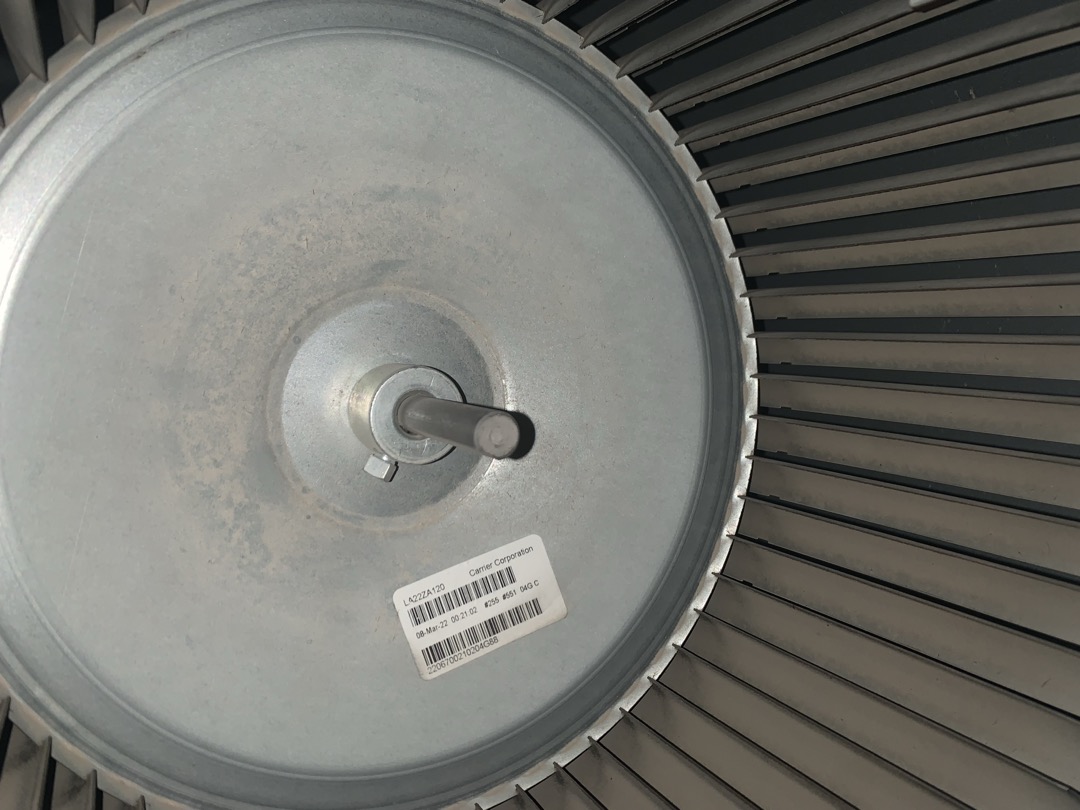
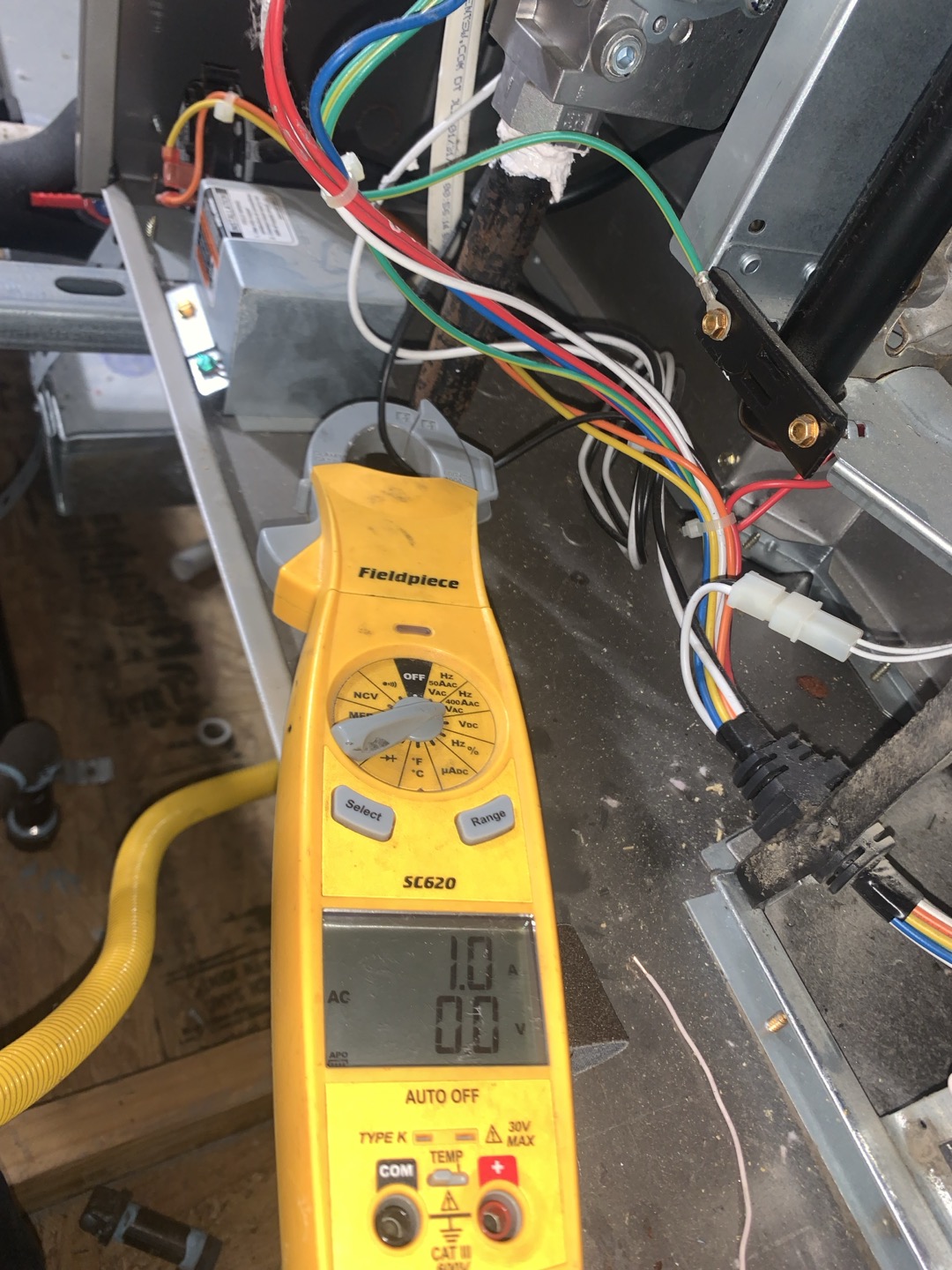
Preformed dryer vent cleaning. Preformed 2 system heating maintenance on 2018 gas furnaces. I tested all electrical components and safeties on both units. All electrical components and safeties tested within manufacturer specifications. I did find that unit number 1 ducts were dirty, also both units did not have float switches on them along with blow out valves. I presented client with findings. Client would like to hold off for now. I noticed when visually inspecting the outside unit that the suction line was not getting as cold as I would like to see. I proceeded to take a temperature reading of unit number 1s supply temp. I was getting around 58 degrees. Client would like refrigerant levels checked during their next visit. Client did not have filters to change out at this time 20x25x4. Unit was cooling upon departure.
